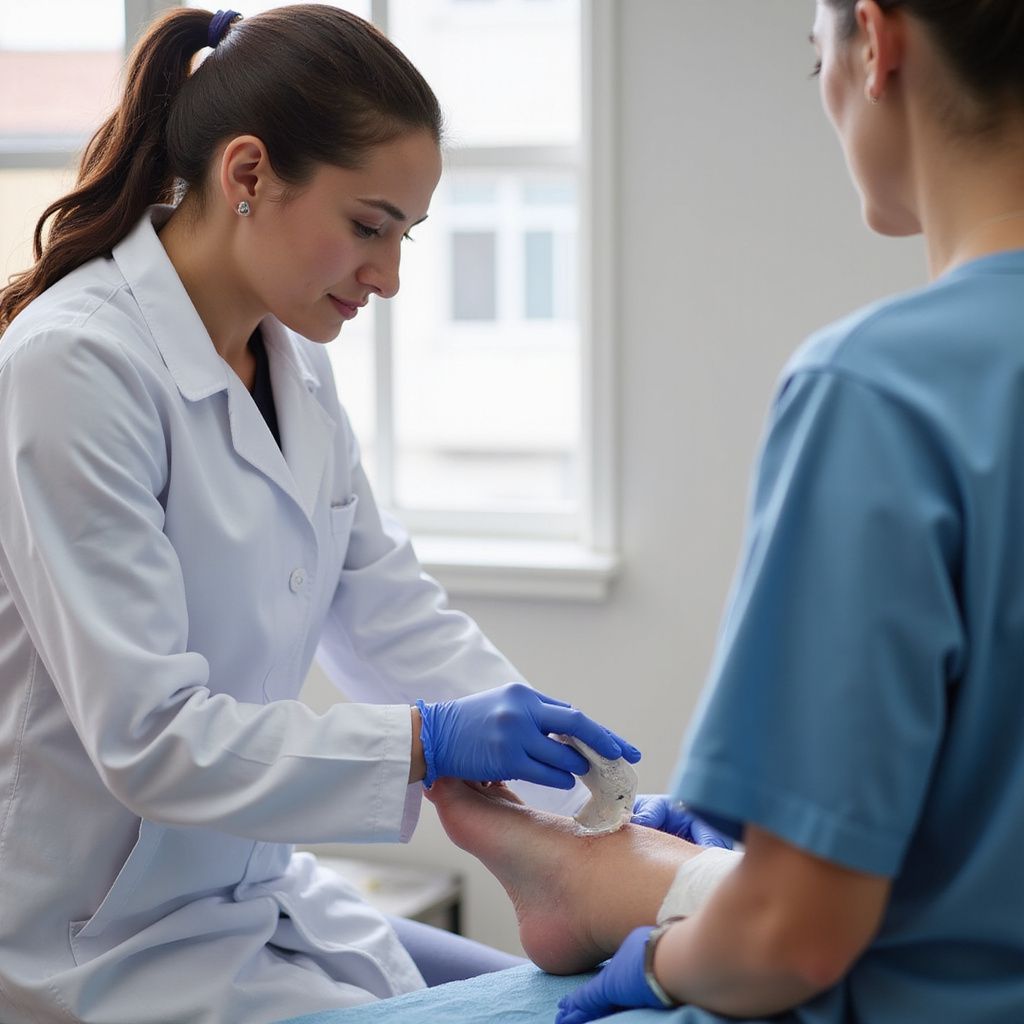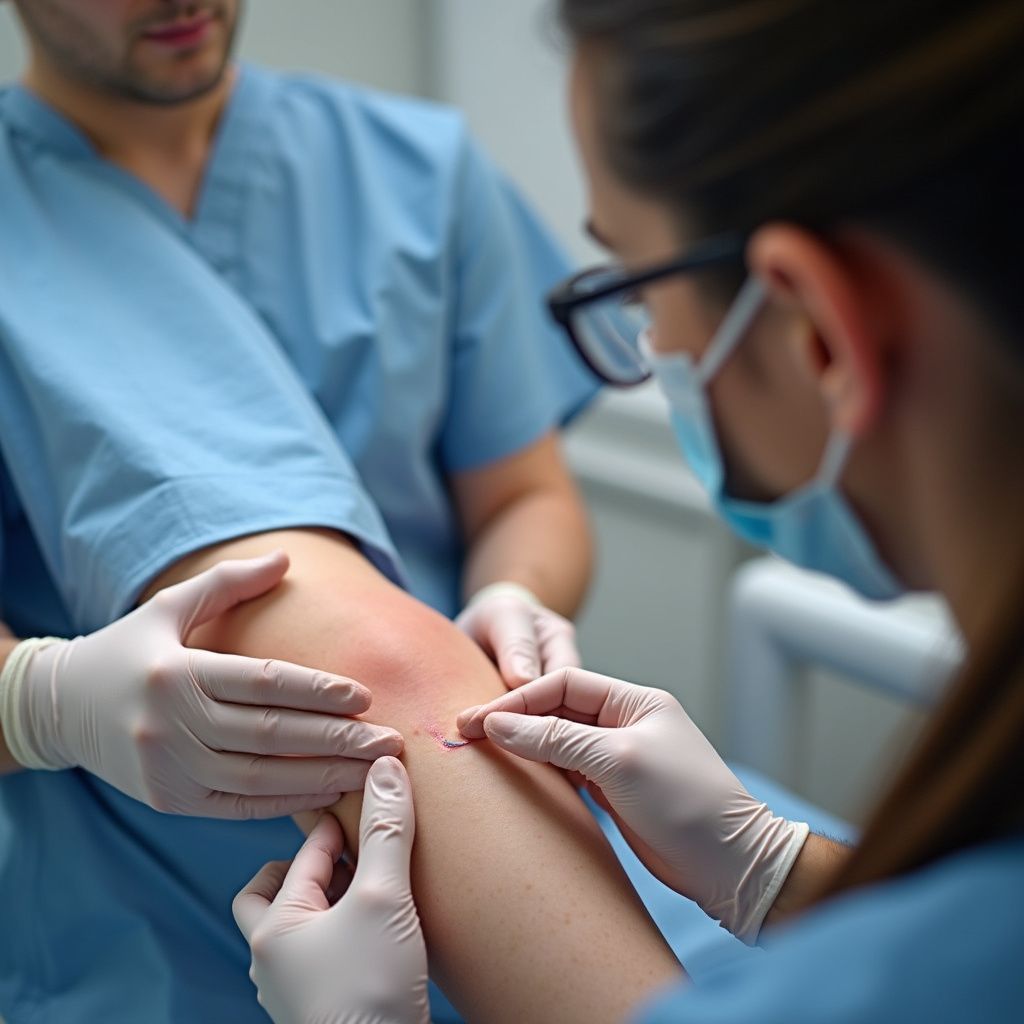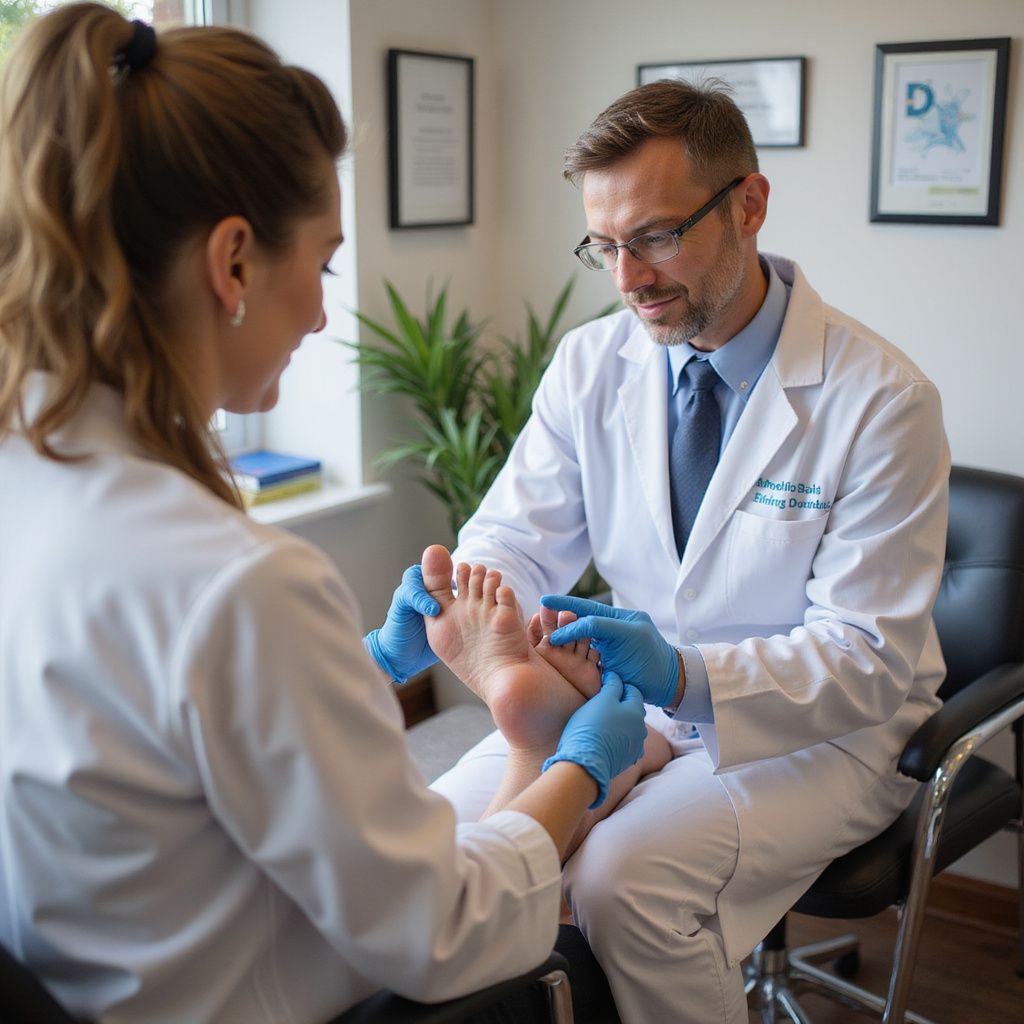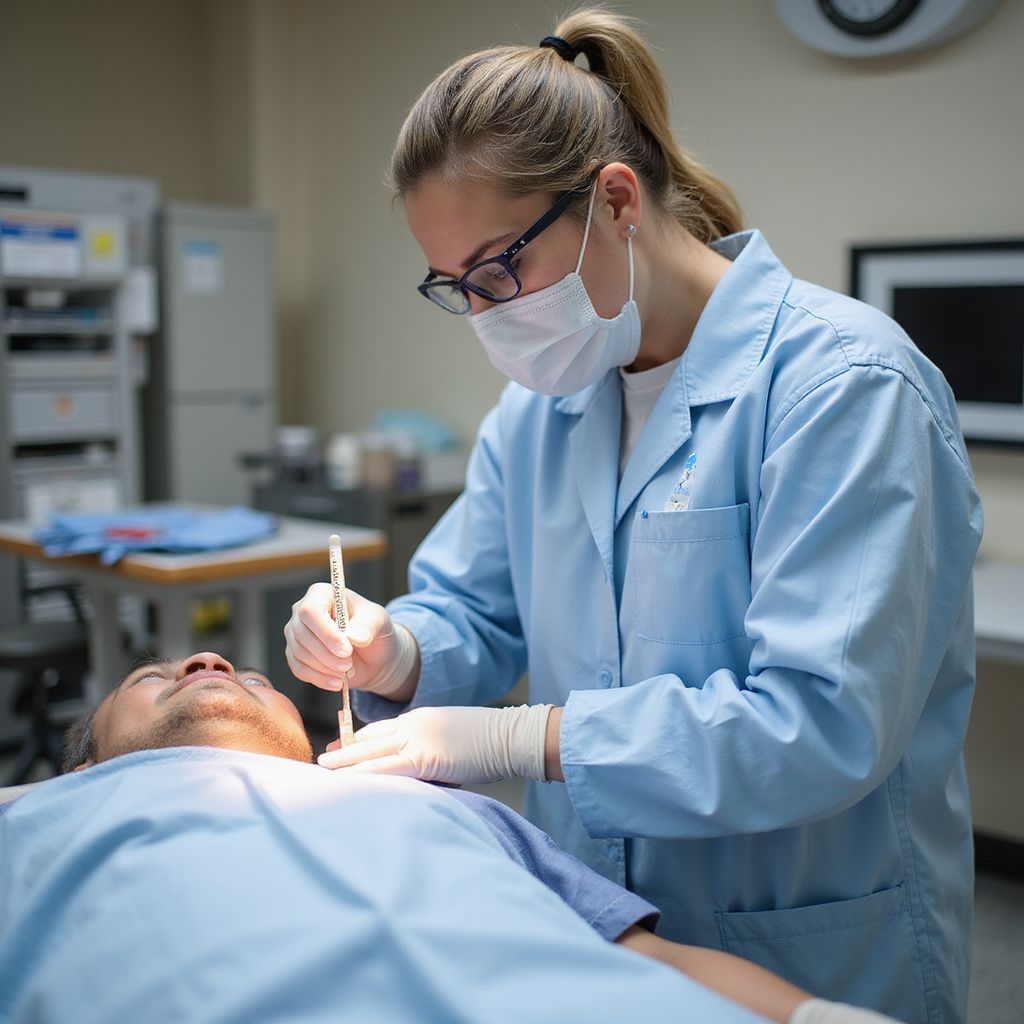A 70-year-old female presented with a sacral wound measuring 38 cm² in circumference and 1.6 cm in depth. Patient's wound was treated using DermaBind TL (formerly AmnioBind), a terminally sterilized, dehydrated, full-thickness placental membrane allograft consisting of amnion, chorion, and the associated intermediate (spongy) layer. Treatment consisted of covering the wound with DermaBind TL, spraying the membrane with a zinc solution and covering the wound with gauze. Every 6 days the gauze was removed and new DermaBind TL allograft applied over the proceeding allograft. Treatment proceeded for 4 weeks in which time the wound was reduced to 16 cm² in circumference and 0.9 cm in depth.
Forward Nex: Advancing Wound Care with
DermaBind™
Empowering private practices with physician-friendly wound care products backed by clinical evidence.
Products Manufactured by HealthTech Wound Care
Request Product Information
Get details on DermaBind™, our Medicare-covered amniotic membrane allograft.
Contact Us
We will get back to you as soon as possible.
Please try again later.
ForwardNex:
Advancing Wound Care
with
DermaBind™
Empowering private practices with physician-friendly wound care products backed by clinical evidence.
Products Manufactured by HealthTech Wound Care
Request Product Information
Get details on DermaBind™, our Medicare-covered amniotic membrane allograft.
Contact Us
We will get back to you as soon as possible.
Please try again later.
About DermaBind™
DermaBind™ represents a breakthrough in wound care technology, offering superior healing outcomes compared to
traditional treatments.Unlike many other placental allografts,
DermaBind™ preserves all native layers of the placental membrane — amnion, chorion, and the spongy intermediate layer — to deliver a biologically rich graft containing more than 400 proteins, including collagens, growth factors, and cytokines.
The proprietary processing method avoids unnecessary chemicals, antibiotics, or preservatives and ensures the graft is never frozen. This creates a product that is
safe, non-immunogenic, easy to handle in outpatient settings, and shelf-stable for up to 3 years at room temperature.
Available in two configurations — DermaBind TL (CPT Q4225) and DermaBind FM (CPT Q4313) — the product is designed for use in chronic and acute wound care, including diabetic foot ulcers, venous leg ulcers, pressure injuries, trauma wounds, and wounds with exposed bone or tendon.
What is DermaBind?
DermaBind™ is a
dehydrated amniotic membrane allograft (dHACM) that preserves the comprehensive collagen matrix, glycoconjugates, and glycosaminoglycans naturally found in placental tissue. It is available in two configurations:
- DermaBind TL (CPT Code Q4225): Terminally sterilized full-thickness membrane
- DermaBind FM (CPT Code Q4313): Full membrane configuration
Key Advantages:
- Retains all native layers of the placental membrane — amnion, chorion, and the spongy intermediate layer
- Processed without unnecessary chemicals, antibiotics, or preservatives
- Never frozen; shelf-stable for up to 3 years at room temperature
- Contains 400+ biologically active proteins including collagens, fibrins, elastins, glycosaminoglycans, and glycoconjugates
- Durable, physician-friendly, and easy to apply in outpatient settings
DermaBind™ Clinical Application & Best Practices
DermaBind TL Product Information
Comprehensive Guide to Mechanism, Properties, and Clinical Applications
Mechanism of Action
Placental Membrane Properties
- Structural Support: Contain complex matrix of structural proteins like collagen and fibronectin provides high tensile strength and elasticity
- Enhanced Healing: Promote increased healing and enhancement of the wound healing process
- Biocompatibility: Be non-immunogenic, eliciting no immune response
- Anti-inflammatory: Reduce inflammation and scar tissue
- Antimicrobial: Have antibacterial properties
- Pain Management: Reduce pain at the site of application
Clinical Applications & Best Practices
Intended Uses
DermaBind TL can be used as a protective wound covering for partial and full thickness acute and chronic wounds:
- Trauma Wounds
- Pressure Injuries
- Dehisced Wounds
- Wounds with Exposed Bone/Tendon
- Venous Leg Ulcers (VLUs)
- Diabetic Foot Ulcers (DFUs)
Application Protocol
Application Steps
Using aseptic technique, remove DermaBind TL from the package; the product may be trimmed as necessary. Place the DermaBind TL patch onto the wound. Assure DermaBind TL is in intimate contact with the wound bed; the product can be hydrated once placed on the wound bed.
Recommended Schedule
- Frequency: Can be used at the onset and for the duration of the wound, weekly or at the discretion of the treating physician
- Secondary Dressing: Apply secondary dressings specific to the wound type over the non-adherent layer, which should remain in place for up to one week
DermaBind™ Clinical Case Study
DermaBind TL Case Study
Treatment of Non-Healing Sacral Wound with Placental Membrane Allograft
Abstract
Patient Information
Patient in this case report is a 70-year-old female. When this patient was presented at the clinic, she was non-verbal and incapacitated. Patient had previously been diagnosed with lung disease/lung cancer. In addition, there was a non-healing bedsore wound on the left cheek/sacrum measuring 38 cm² in circumference and 1.6 cm in depth.
Treatment Protocol
Treatment of the sacral wound was immediately commenced. The existing bandage was removed, the wound area was then rinsed lightly with saline, and a DermaBind TL allograft (6.5 cm x 6.5 cm) was placed directly on the wound. The allograft was covered with cotton gauze and a zinc solution spray. The allograft was left on the wound for 6 days at which time a new allograft was placed over the previously applied grafts. When a new allograft was applied (approximately each week), the circumference of the wound and depth of the wound were measured to assess progression of the wound toward closure. This treatment regimen continued for 4 weeks.
Treatment Results
Weekly Measurements
Treatment Expectations & Outcomes
Based on previous uses of DermaBind TL, the expectation was that the wound would progress from the non-healing state to a healing state. A four-week timeline was not expected to result in a full closure of the wound but significant progress was expected to occur.
Results achieved: The wound circumference was reduced by an average of nearly 7 cm² per week over the 4-week treatment period.
Discussion
A patient, 70F, with a non-healing sacral wound, was treated using DermaBind TL for 4 weeks. During this 4 week period, there was a significant reduction in the circumference and the depth of the sacral wound. Through the four weeks of treatment, the wound circumference was reduced by an average of nearly 7 cm² per week. This patient's treatment was scheduled to be extended to 12 weeks with the expectation that the use of DermaBind TL could bring this wound to a complete closure. Unfortunately, this patient was deceased before the study could be reached 5 weeks.
The purpose of this case study was to assess the feasibility, ease of use and safety associated with the use of this novel full-thickness placental membrane allograft. The sacral wound treated with DermaBind TL experienced at least a 50% reduction in wound area within 3 weeks of initial application. The authors believe that this is the only case reported in the literature of the use of this therapy. Considering that this patient had previously failed conventional wound treatments, the results obtained support the hypothesis that full-thickness placental membrane allografts are effective in promoting wound healing. No adverse events were observed in the study.
Conclusion
DermaBind TL offers an effective and easy-to-use treatment alternative for the management of chronic wounds. Clinical improvement results strongly suggest significant and faster healing, resulting in complete wound closure, in wounds treated with full-thickness placental membrane-containing products. Chronic wounds that do not respond to other standard treatment options show significant healing and wound coverage with placental membranes. Easy storage and extended shelf life promote clinical acceptance in the wound care environment. Lower complication rates compared to other similar products have been reported in numerous clinical studies. Although DermaBind TL has a higher unit (dressing) cost compared to standard wound care, the overall cost is similar or lower considering the faster healing and presumably lower rate of complications and clinical sequelae such as amputations.
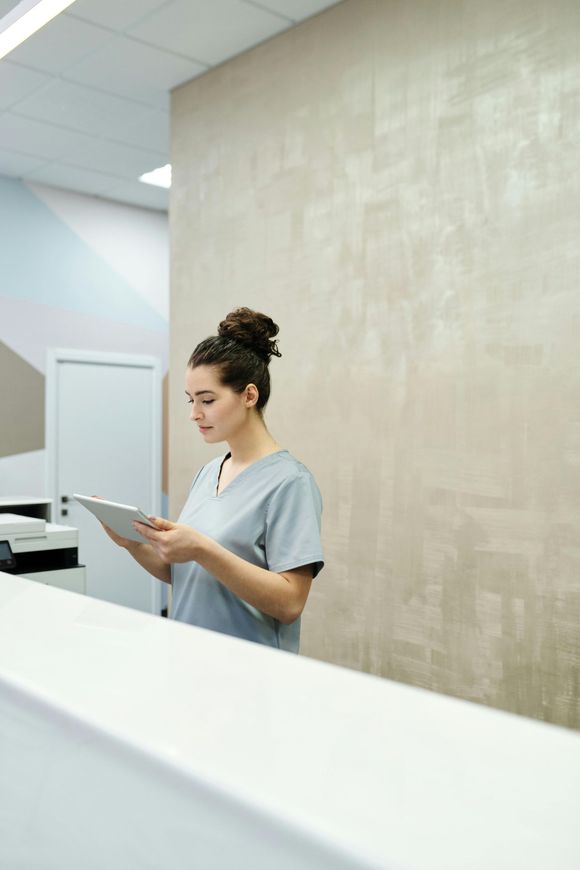
Contact ForwardNex for Product Details and Support
Contact Forward Nex for Product Details and Support
We will get back to you as soon as possible.
Please try again later.


